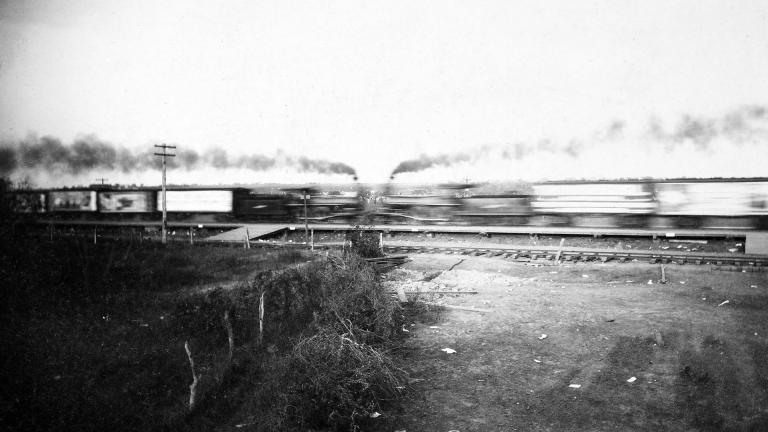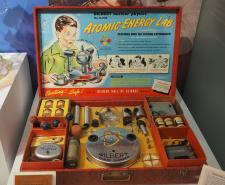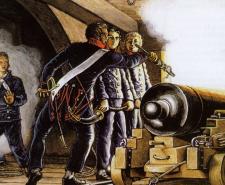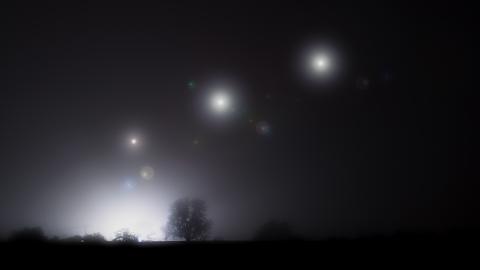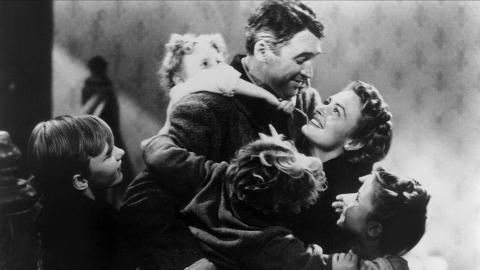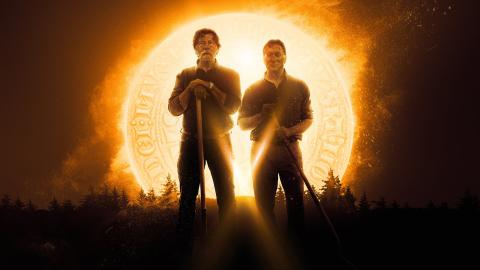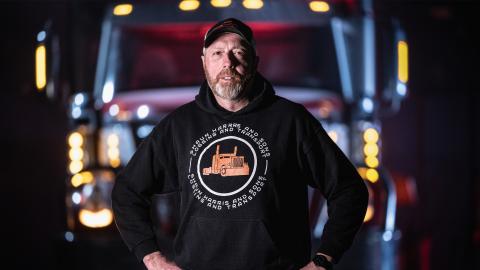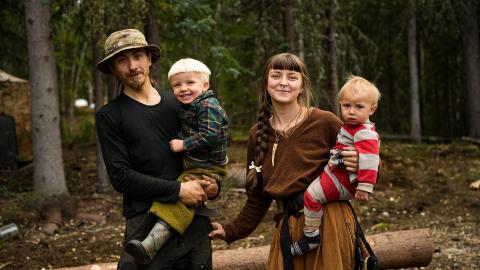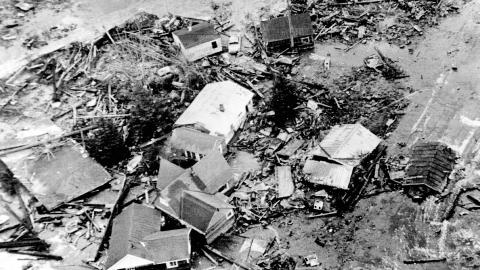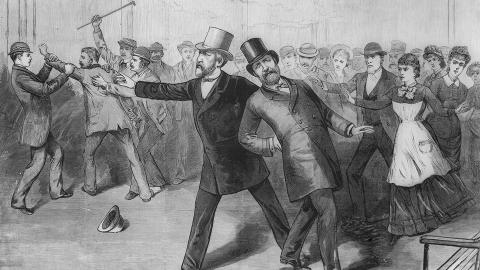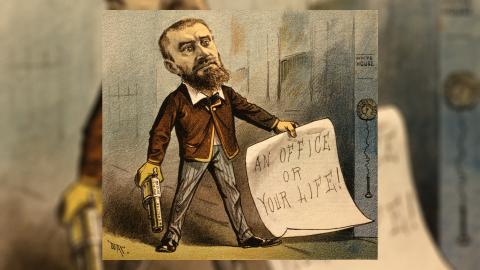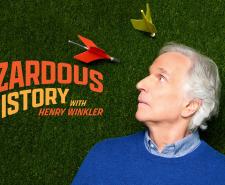
When railway chaos became thrilling live entertainment
Did you know that train crashes used to be staged as live entertainment? Here’s how the ‘Crash at Crush’ in 1896 helped to kickstart a decades-long trend.
Image: The collision of two trains at Crush, Texas on 15th September 1896 | GRANGER - Historical Picture Archive / Alamy Stock Photo
What do you do to have fun? Perhaps you go to concerts, watch films at the cinema or take part in a strange British sport?
However, what would you have done in the 1890s, when entertainment choices were more limited?
Texas residents of the time might have seen newspaper adverts for an upcoming ‘Crash at Crush’. This is the name history has given to a genuine live event where two uncrewed trains were purposefully sent colliding into each other.
Back then, staging deliberate train crashes to enthrall the crowds was novel. It also turned out to be dangerous, as attested in Sky HISTORY’s Hazardous History With Henry Winkler. So, what was the method to the madness?
Hazardous History With Henry Winkler starts Monday 17 November 10pm on Sky HISTORY and HISTORY Play.
Was the Crash at Crush the first staged train wreck?
Not at all. One had already been held in the 1880s at the behest of railway equipment salesman A.L. Streeter. The largely positive publicity surrounding the event is likely what convinced William George Crush to attempt the same trick in Texas.
Crush was a passenger agent for the Missouri-Kansas-Texas (MKT) Railroad. As the name suggests, this extensive rail network served multiple US states. Nonetheless, the company had been shaken by the ‘Panic of 1893’, the most serious economic depression in US history up to that point.
The MKT (the ‘KT’ part of the acronym gave the railroad its common nickname, ‘the Katy’) hoped for a windfall. Crush thought he’d figured out where it could come from.
What made the Crash at Crush an attractive idea?
One is that, quite simply, it would likely be a big money-spinner for the Katy. Crush anticipated that the event would attract about 20,000 attendees. However, he also decided that he would not charge for admission to the event itself.
The money would instead come from sales of train tickets to Crush, the makeshift town where the crash would take place. (Yes, the town was named after William George Crush himself.)
Katy trains would take passengers to Crush from any of the rail network’s other stops in Texas. Crush itself was located close to the town of West and about 13 miles north of Waco.
Was the Crash at Crush expensive to arrange?
The town of Crush was fitted out with many amenities, including water wells, a grandstand, a press platform, lemonade stands, and medicine shows.
Conversely, the locomotives set to hurtle towards each other did not have to be specially made for the purpose. They were actually pre-existing 30-ton steam engines originally built in the 1870s.
By the 1890s, these trains were seen as outdated, as they had been increasingly replaced by newer, more modern 60-ton engines. It made sense to destroy the older units in a way that made money for the railroad.
Anticipation grows on the big day
In the end, attendance far surpassed expectations. Estimates of attendee numbers vary, but are generally in the region of 30,000 to 50,000. Even the lower end of this range would have been no small feat, as the Crash was scheduled for 15th September 1896. This was a Tuesday, when many Texans should have been working.
A four-mile track had also been built for the two soon-to-be-crashed locomotives - the No. 999 and the No. 1001. Members of the public were kept at least 200 yards away from this track, while journalists were permitted to stand more than 100 yards closer.
Shortly after 5pm, William George Crush arrived on horseback and signalled to the trains’ crews that it was time to start the show. These crews got the decommissioned locomotives moving before jumping off them to safety. It is thought that, when the two engines did collide, they were each rocketing at about 50mph.
How did the Crash at Crush go awry?
The collision at first brought a satisfying crunch of metal. However, just when it looked like the spectacle was over, the steam engines’ boilers exploded. This sent metal fragments of various sizes flying through the air.
Unfortunately, the spectators hadn’t been watching from an entirely safe distance after all. Many of them were dramatically showered with remains of the locomotives. Two people were killed, while at least six others incurred serious injuries.
It all initially looked like a PR disaster, but press reports of the crash were much more positive than the Katy had expected. Staged train crashes subsequently entered the mainstream. They remained there until the Great Depression of the 1930s, when the practice of destroying perfectly functional trains started to look wasteful.
Stay in the know about upcoming shows by subscribing to the Sky HISTORY Newsletter.
